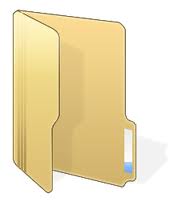.jpg)
In Windows 7, browsing for files from within a program can be a bit confusing. Why? Because for some reason, there are two separate menus for exactly that function, and they behave differently.
The first sort of menu looks more or less like Explorer.exe (image below). It’s got a folder view in the main part of the window, and a navigation pane on the left side that makes it quick to get where you want to go. If you frequently save to or load from a particular location, you can make sure it’s always at hand by dragging that location into your Favorites bar. This is the good window.
The second menu is a holdover from pre-Windows 7 days—it’s the plain-old Open menu, with a small browser and a wimpy selection of predefined, uncustomizable shortcut icons on the left (image below). It is, unfortunately, still more common in programs (including Adobe’s Creative Suite) than the superior, newer menu.
Fortunately, you actually can customize the second type of file browser—it just takes some work. There’s a way to do it in the system registry, but it’s complicated and not necessary. Instead we’ll use a free app called PlacesBar Editor.
Step 1: Download PlacesBar Editor
PlacesBar Editor is available for free at bit.ly/lqKxW. Simply follow the link to download the app, unzip it, and install it.
Once it’s installed, go ahead and run the program. The main interface is strangely complicated—despite an unnecessarily large assortment of buttons and icons on the top of the window, there’s actually really only one thing we care about: the fields in the Windows tab.
Step 2: Customize Your Windows Places Bar
The Windows tab lets you directly customize the lineup of five icons that appear in your places bar (image below). For each of the five places, you can click the drop‑down box on the right to select any system folder on your computer, such as My Documents, the Desktop, or My Computer. Most of these locations are already in the places bar, so you’ll more likely use the field to the right (which you can enable by clicking the Custom checkbox).
Here, you can add any non-system folder by simply entering its complete path in the text field, or clicking the folder icon and browsing for it. You can use any folder on your system, or any network location. We particularly like being able to add our Dropbox folder to our places list, as well as our working folder for screenshots.
Once you’ve made your changes, you’ll have to click the Save button at the top in order to have them take effect. At that point, you can click the Test button to open a sample file browser and make sure everything is in order.
Note that when you click Save, all places bar icons are changed to the ones specified. In other words, you can’t just use PlacesBar Editor to change a single location and keep the rest the same—you’ll have to define a full set of five (or less) that you want to use. If, for whatever reason, you don’t care for your new layout, you can click the Default button to get the old locations back.
Δεν υπάρχουν σχόλια:
Δημοσίευση σχολίου